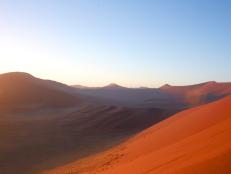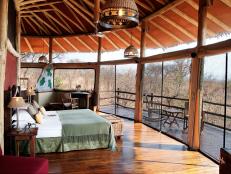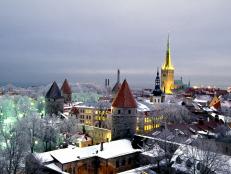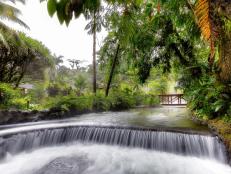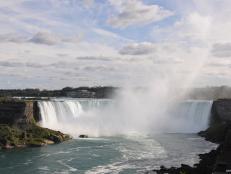11 Active Volcanoes You Can Experience Close Up
Whether admired from afar or viewed from the crater’s edge, these active volcanoes around the world inspire awe and respect for the forces of nature.

Related To:
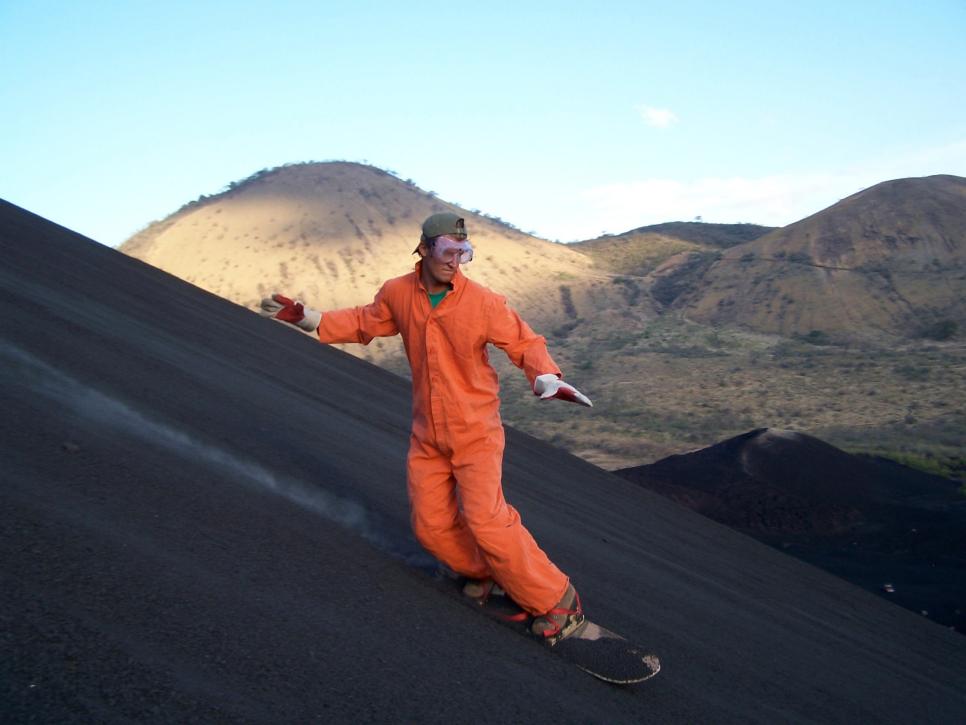
Photo By: Barcroft
Photo By: Boogich
Photo By: Vincent Grafhorst/ Minden Pictures, FotoWare FotoStation
Photo By: Amana Images Inc
Photo By: Puripat Lertpunyaroj
Photo By: Laura Grier, FotoWare ColorFactory
Photo By: Mark Newman
Photo By: Saro17
Photo By: dan_prat
Photo By: TrueCapture
Photo By: www.bazpics.com
Cerro Negro, Nicaragua
Suit up and send down Nicaragua’s Cerro Negro outside of Leon. Volcano surfers are issued a wooden sled with a metal and linoleum bottom, and a one-piece protective suit, gloves and goggles. After a 45-minute hike up the volcano, surfers can ride their sleds down like snowboards or sleds (sledding results in more speed, typically 30 m.p.h.). The marble-sized cinders act like ball bearings, sending riders down the 40-degree slope 2,400 feet to the bottom to do it again. The cost is typically $30 and several tour companies offer tours. Quetzaltrekkers is a non-profit tour company that donates all profits to local groups helping disadvantaged children in Leon.
Hawai'i Volcanoes National Park, Hawai'i
One of the world’s most impressive volcanic sites that’s open to the public, Hawai'i Volcanoes National Park on the Big Island made headlines when Halema'uma'u— the summit crater of Kīlauea Volcano—erupted in May 2018. Oozing lava consumed private property, and earthquakes cracked park roads, closing the park. When the park is open, drive the Chain of Craters Road to ten stops where craters, archaeological sites and hardened lava fields are seen. Six hiking trails pass through rain forests and hardened lava fields, and glowing lava can be seen when there’s volcanic activity. Check here to see current lava conditions.
Mount Nyiragongo, Democratic Republic of the Congo
Virunga National Park, a UNESCO World Heritage Site in the Democratic Republic of the Congo, is home to mountain and silverback gorillas, hippos and other critically endangered wildlife that live within its mountainous 5,000-square-mile borders. Intrepid hikers had been able to climb the 11,300-foot-high active Mount Nyiragongo to peer into its crater and see the world’s largest lava lake, then camp out near its freezing summit. Tours begin from the Kibati Ranger Station at 9 a.m. and cost $300 per person. Violence within the park has temporarily closed access to tourists until 2019, greatly impacting Congo’s economy. Click here to learn more about the park and how to help.
Mount Aso, Japan
Mount Aso within the Kumamoto Prefecture on Japan’s third-largest island, Kyushu, is one of the world’s largest active calderas with a circumference of 60 miles. Inside the Mount Aso caldera are several smaller volcanic peaks, including Mount Nakadake. It’s a 30-minute hike to the Mount Nakadake’s crater’s edge that is sometimes closed for intense volcanic off-gassing. A tram car, called a ropeway, is 1200 yen round-trip and takes four minutes to transport 91 passengers to and from the crater’s edge every 15 minutes. Peering into the crater, visitors see a turquoise-colored lake steaming with sulfuric gasses. Throughout the region, visitors may stay at onsens and soak in the hot springs heated by the volcanic activity. The Aso Geopark became a UNESCO World Heritage Site in 2015.
Mayon Volcano, Philippines
Called the world’s most beautiful volcano, Mayon is a symmetrical volcano in the province of Albay in the Philippines. This active volcano last erupted in January 2018 and has erupted several times in recent years causing evacuations and deadly mudslides. Several companies offer trekking and ATV tours of the lush countryside surrounding the volcano to overnight camping trips to the crater’s 8,000-foot-high edge as conditions permit. The Albay Biosphere Reserve that includes Mayon was named as a UNESCO World Heritage Site in 2016.
Pacaya Volcano, Guatemala
Located 20 miles southwest of Guatemala City, Guatemala’s Pacaya Volcano is within the Parque Nacional Volcan de Pacaya. The two-hour hike requires a guide, and companies can be hired in Antiqua for about $15 including transportation and park entrance fees. While lava flows haven’t been seen since the last eruption in 2010, plenty of fumaroles let hikers know they’re on an active volcano, and it’s a custom to roast guide-provided marshmallows over them.
Sabancaya, Peru
Sabancaya Volcano in the Peruvian Andes sits 19,606 feet above sea level. Its name in Quechua means "Tongue of Fire," and it last erupted in 2016. While there isn’t currently any lava to be seen on its slopes, its billowing plume of gas is visible for hundreds of miles on a clear day. Experienced hikers who can tackle the elevation can summit this volcano as a day trip with outfitters such as Peru Adventure Tours.
Mt. Etna, Italy
At 10,915 feet high, Mt. Etna in Sicily, Italy, is Europe’s tallest volcano. A UNESCO World Heritage Site since 2013, several hiking routes pass through Etna Park before reaching the volcanic moonscape below the volcano’s scree slopes and summit. Mt. Etna frequently puts on an impressive show with spouts of lava that glow into the night. To hike Mt. Etna after passing through the park, begin at the Rifugio Sapienza, a hotel and restaurant on the slope of Mt. Etna. From here, visitors can take a cable car or Jeep tour part way up the volcano, or hire an alpine guide to make the trek to the summit craters depending on conditions.
White Island, New Zealand
White Island, or Whakaari in the Maori language, is an island volcano seen from sight-seeing flights or after a boat ride from Whakatane, Rotorua or Tauranga after cruising across the Bay of Plenty. The island is privately owned, but visitors may tour the active volcano that belches sulfuric gasses that are 1,472 degrees Fahrenheit. Don a helmet and explore the volcano’s steaming crater that’s stained yellow with sulfur.
Eyjafjallajökull, Iceland
Eyjafjallajokull is one of the world’s most famous volcanoes, and one of the hardest to pronounce for those that don’t speak Icelandic (it means "island-mountain glacier"). This active volcano disrupted worldwide air traffic when it erupted in 2010, spewing millions of tons of ash into the atmosphere and rerouting transatlantic flights. The eruption has also made it a prime destination for visitors to Iceland. This glacier volcano is 5,477 feet above sea level, and it’s possible to summit the glacier and peer into the usually snowy, steamy craters of Magni and Modi on a strenuous guided tour. The Fimmvorduhals Trail is an advanced day hike between the Skogafoss waterfall and the Thorsmork Valley Natural Reserve at the base of Eyjafjallajokull. Jeep and ATV tours are also available.
Mount St. Helens, Washington
Mount St. Helens’ 1980 eruption during which 57 people perished is perhaps the most infamous volcano event in modern history. Made a national monument in 1982, today the Mount St. Helens National Volcanic Monument encompasses 110,000 acres of the Gifford Pinchot National Forest, lava tubes and the volcano itself. Climbing to the active volcano’s summit requires a permit and requires no technical mountaineering gear. The five-mile hike to 8,365 feet takes an average of 7 to 12 hours round-trip.
